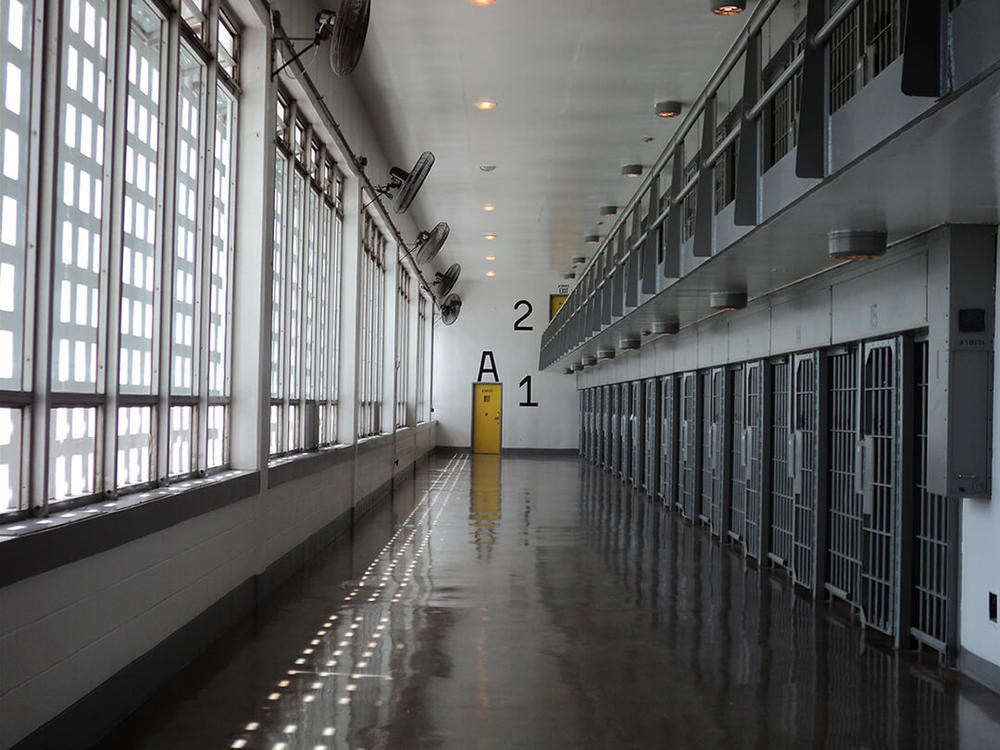
Caption
Georgia’s Department of Corrections shields some of the state’s lethal injection execution process from public view.
Credit: Georgia Department of Corrections

Georgia’s Department of Corrections shields some of the state’s lethal injection execution process from public view.
Willie James Pye was put to death by lethal injection in the state’s first execution in over four years last week. Pye was pronounced dead at 11:03 p.m. Wednesday at the state prison in Jackson after being convicted for a 1993 kidnapping, rape and murder of his former girlfriend.
But despite the case’s significance and national attention over Pye, the public’s view of the execution itself was restricted under state protocol blocking media witnesses for state executions from critical parts of the process.
Two days before Pye’s execution, the American Civil Liberties Union filed an emergency appeal to the Georgia Supreme Court challenging media witness restrictions ahead of Pye’s March 20 execution. Restrictions include no media witnesses for the preliminary steps in state executions including preparation of lethal drugs and checking equipment. While the condemned is restrained and strapped to the gurney, only one media witness is allowed. There are also no media witnesses for drug administration itself, which is done through IV tubing behind a wall while the condemned sits in view of the media. In addition, the state arbitrarily cuts off audio access from inside the execution chamber.
“No one sees if there are complications there. No one sees how many vials of drugs are being administered, whether the correct amount of drugs are being administered,” Cory Isaacson, lead counsel on the ACLU lawsuit said. “All of that happens, literally, behind a concrete wall and no member of the media or then, of course, the public is able to know what’s actually happening when the state is administering these lethal drugs.”
The Georgia Supreme Court denied the ACLU’s emergency appeal in advance of Pye’s execution, but the lawsuit, which names Georgia Department of Corrections Commissioner Tyrone Oliver, Georgia Diagnostic and Classification Prison Warden Shawn Emmons, and Georgia Attorney General Chris Carr as defendants, is not over.
“The lawsuit continues and we will continue to fight for the right of the public to know what is happening during state executions,” Isaacson said.
Attorney General Chris Carr’s office declined to comment on the case, but referred to the Fulton County Superior Court’s denial of ACLU’s request.
“The state filed a response to our motion, in which they essentially argued that they could not loosen any of these restrictions, at this point, because it would lead to a delay in the execution of Mr. Pye,” Isaacson said. “Nothing we asked for was burdensome in terms of time or effort.”
Rhonda Cook, who served as a media witness for 28 state executions while reporting for The Atlanta Journal-Constitution, was cited in the ACLU lawsuit footnotes for the 2016 state execution of Brandon Astor Jones where the lethal injection team inserted an IV into Jones’ groin because they were unable to locate a vein in his arm.
When the state used electrocution for capital punishment, executions were open and reporters watched the whole process, including the inmate entering the death chamber. Once the state moved to lethal injection, media witnesses were allowed open observation for the first few inmates executed by injection before the state instituted the current regulations that only allow media witnesses to observe after IV insertion.
Jose High was executed by lethal injection in 2001. Cook was covering the case as a media witness for the AJC at the time and she recalls complaining about being unable to see the IV insertion. The lethal injection team for High performed a “cut down” procedure where the IV was inserted into High’s clavicle.
“Nobody was there to see and that leaves us at the mercy of the state telling us what happened and you can’t trust that,” she said.
The Georgia Department of Corrections responded by allowing one media witness, or “media monitor,” from the county where the crime occurred to see execution preparation.
But media monitors are often inexperienced in covering executions and are only present for one execution rather than seasoned media witnesses like Cook that cover all state executions.
“We were depending on someone who had not witnessed an execution, playing a very critical role of ensuring that everything was done properly. I was a media witness for 28, I was a monitor only once. That makes no sense,” Cook said.
The state also turns the microphone in the chamber on and off in the chamber so that the media cannot hear what happens until the warden reads the execution result.
“We cannot hear anything they might be responding to verbally, if they respond because of a problem with the drugs, we don’t hear that,” Cook said.
Michael Mears, an associate professor at John Marshall Law School and expert on the death penalty in Georgia, said he thinks the ACLU case is unlikely to be successful given the current political climate and that the lack of media access is preemptive to avoid bad publicity in case of botched executions.
“They also want to keep the public from knowing how gruesome these executions can sometimes be and I think it’s an affront to society’s right to hear and see how the state is carrying out capital punishment,” Mears added.
Cook said she sees no reason for keeping capital punishment in Georgia a secret from the press.
“We’re the ones that are there as the eyes and ears of the public, and we’re there to ensure that the state does it correctly,” she said. “The citizens of Georgia have the right and deserve to know what’s going on when the state is carrying out such a severe punishment in their name.”
This story comes to GPB through a reporting partnership with Georgia Recorder.